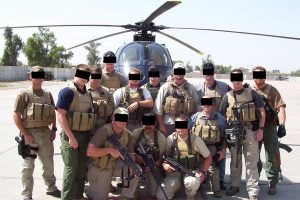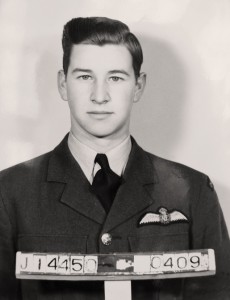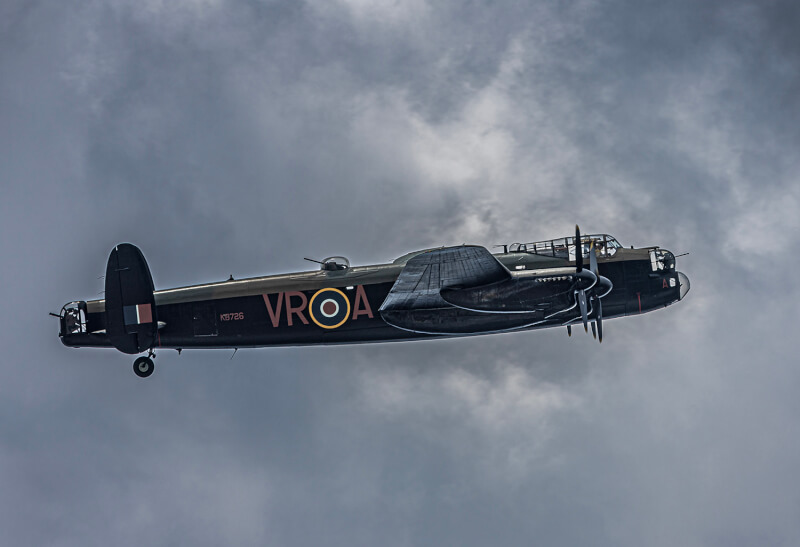
The Mynarski Lancaster, a tribute aircraft owned and operated by the Warplane Heritage Museum of Canada in Hamilton, is one of only two Lancasters flying in the world. [Stephen J. Thorne/LM]
There were 7,377 Avro Lancasters built during the Second World War, 430 of them in Canada; 3,932 were lost. But this Lancaster, VR-A of 419 (Moose) Squadron, Royal Canadian Air Force, Tail No. KB726, was, as the stone notes, Andrew Mynarski’s Lancaster.
Pilot Officer Mynarski was the mid-upper gunner from Winnipeg who earned a posthumous Victoria Cross after desperately trying to save his trapped rear gunner from their crippled aircraft until flames forced him to jump. The rear gunner, PO Pat Brophy, miraculously survived the crash. On fire when he parachuted from the airplane, Mynarski did not.
The simple grey stone marker mounted on a little rock wall well off the beaten path reads (translated from French): “In the meadow behind the monument, the bomber Lancaster VR-KB 726 of 419 (Moose) Squadron R.C.A.F. crashed on the night of 12-13 June 1944. In memory of Pilot/Officer Andy Charles Mynarski, 27 years, V.C.”
The area in the Pas-de-Calais department of France is better known for WW I casualty clearing stations during the 1917 battles around nearby Arras. While Great War memorials abound, Second World War memorials are less common here.
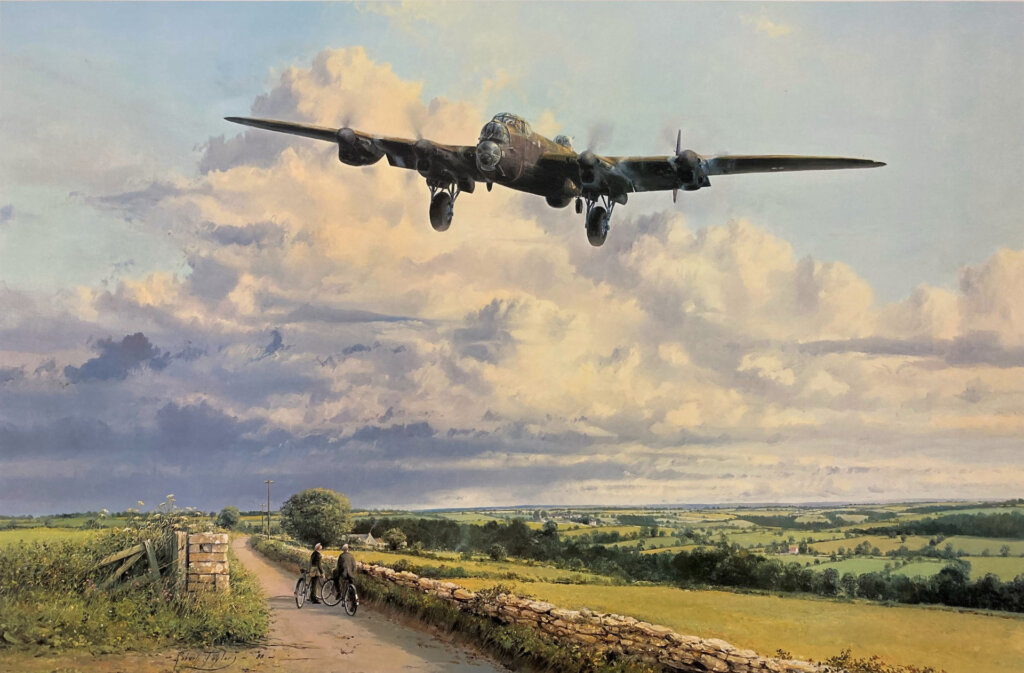
“Early Morning Arrival” by aviation artist Robert Taylor depicts Andrew Mynarski’s Lancaster VR-A on final approach at RAF Colerne early on D-Day morning, June 6, 1944. A week later, the plane was shot down. [Robert Taylor/The Military Gallery in association with Wings Fine Arts]
They cleared flak over the coastline and were briefly “coned” by searchlights as they neared their objective, the Cambrai railyards, just around midnight that second Tuesday in June. They never made it. As they closed on the target, they were attacked from below and astern by a Junkers Ju 88 night fighter.
Raked by cannon fire with major strikes on both port engines and the centre fuselage, a hydraulic fire engulfed the bomber. Down to two engines, the pilot, Flying Officer Arthur de Breyne of Saint-Bruno, Que., ordered the crew to bail out.
As Mynarski navigated his way through the notoriously difficult terrain of the Lancaster’s interior toward the rear escape door, he saw through the inferno that Brophy was struggling to get out of his jammed rear turret.
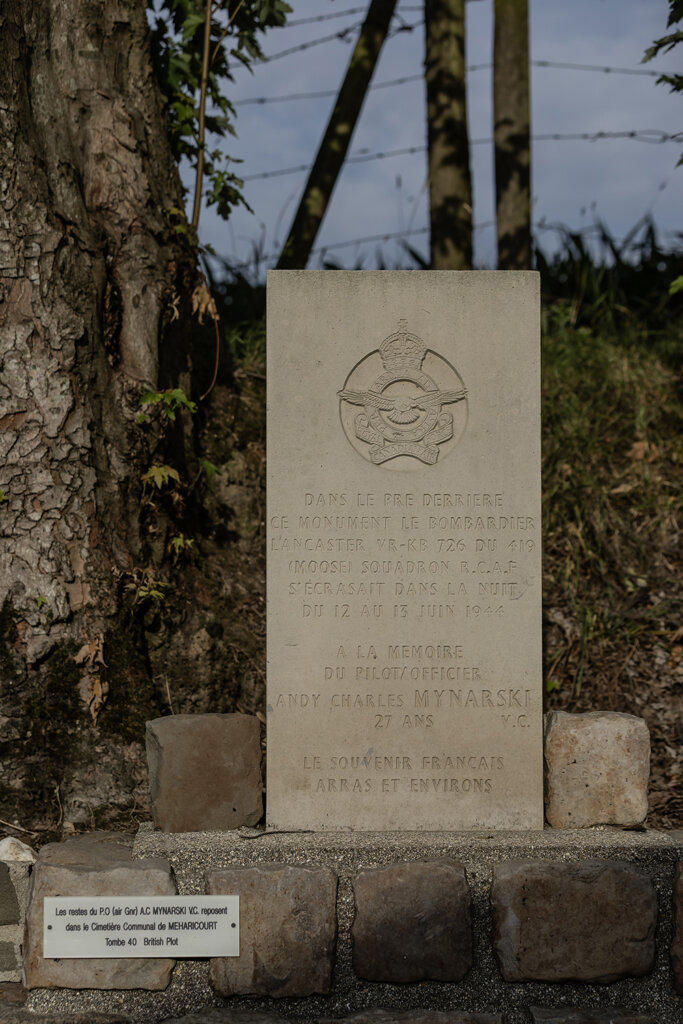
The stone tablet is erected at the site well off the beaten path in an area best known for its WW I history. [Stephen J. Thorne/LM]
A reluctant Mynarski crawled back through the flames to the door, paused, saluted, and reputedly said “Good night, sir”—his familiar nightly sign-off to his friend—and jumped.
Brophy was the only member of the crew unable to exit the dying aircraft. Five left via the front escape hatch on the floor behind the cockpit. Mynarski was the only one to leave by the back door.
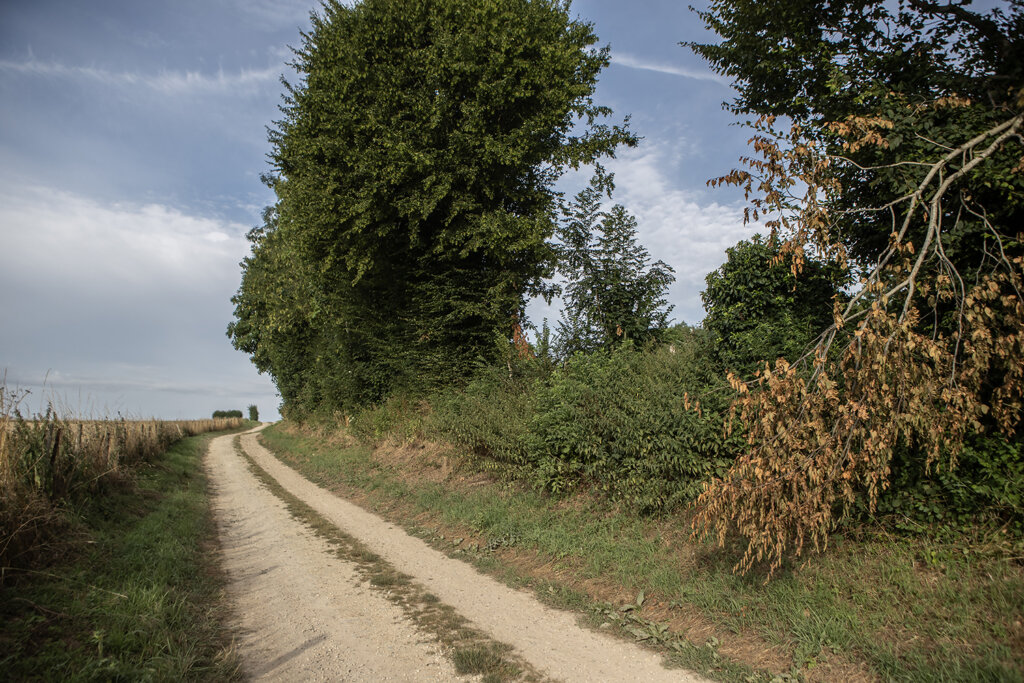
A gap remains where Mynarski’s Lancaster took out a tree before crashing in the adjacent field. [Stephen J. Thorne/LM]
Brophy was still trapped in the bomber when it crashed through the trees lining the laneway next to the field. As the plane began breaking apart, the impact cracked his turret open and flung him out. Brophy hit a tree and was knocked out.
The French Resistance hid four of the VR-A crew: Brophy, pilot de Breyne, navigator Robert Bodie and radio operator James Kelly. All but Brophy were spirited back to England shortly after the crash. Brophy stayed on and fought alongside the Resistance for three months. Two others—flight engineer Roy Vigars and bomb aimer Jack Friday—were captured and spent the rest of the war in a Stalag before they were liberated by American troops.
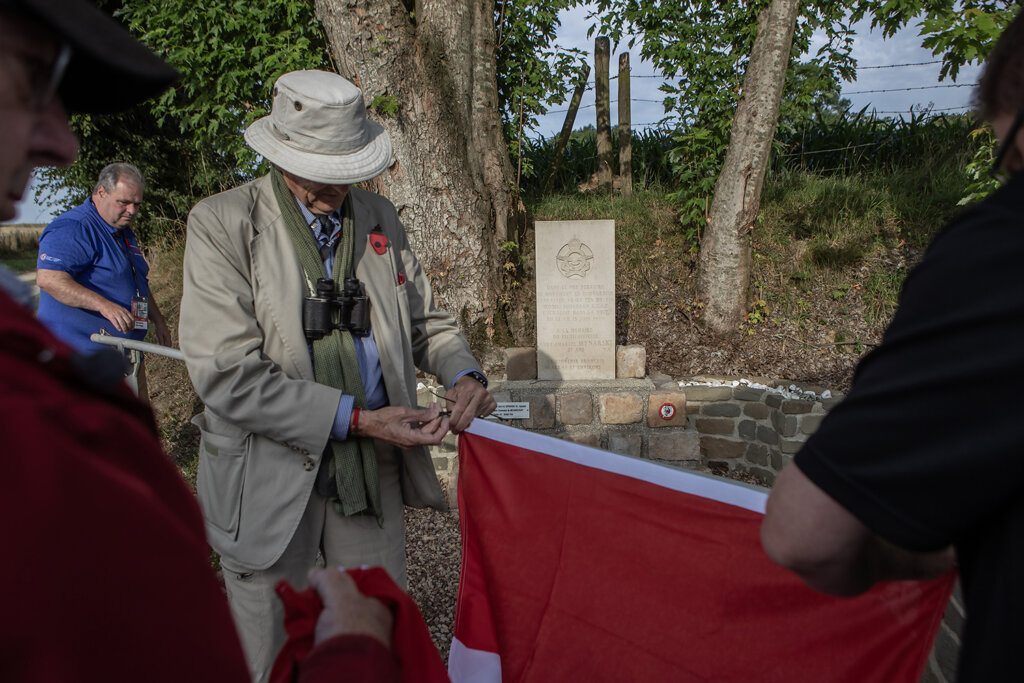
In an impromptu ceremony, Canadian Legion pilgrims raise the flag at the site where Andrew Mynarski’s Lancaster came down. [Stephen J. Thorne/LM]
Today, a gap in the treeline down that laneway marks the spot where VR-A crashed through and into the field beyond.
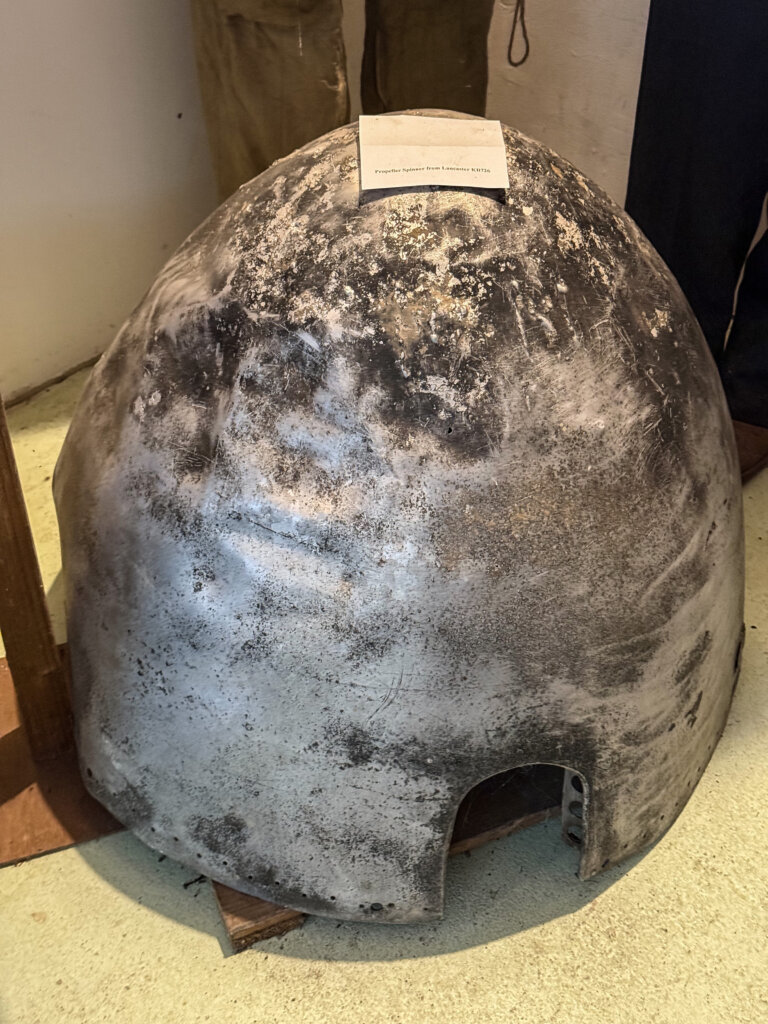
The spinner from Andrew Mynarski’s Lancaster VR-A is tucked away in the corner of the barn museum at Avril Williams Guest House in Auchonvillers, France. It had served as a neighbour’s flowerpot for three decades. [Stephen J. Thorne/LM]
Mynarski, a Canadian legend, is memorialized with statues at RAF Middleton St. George and at the Valiants Memorial in Ottawa, among other places. He lies buried in the British Plot, Grave 40, at Méharicourt Communal Cemetery near Amiens, France.
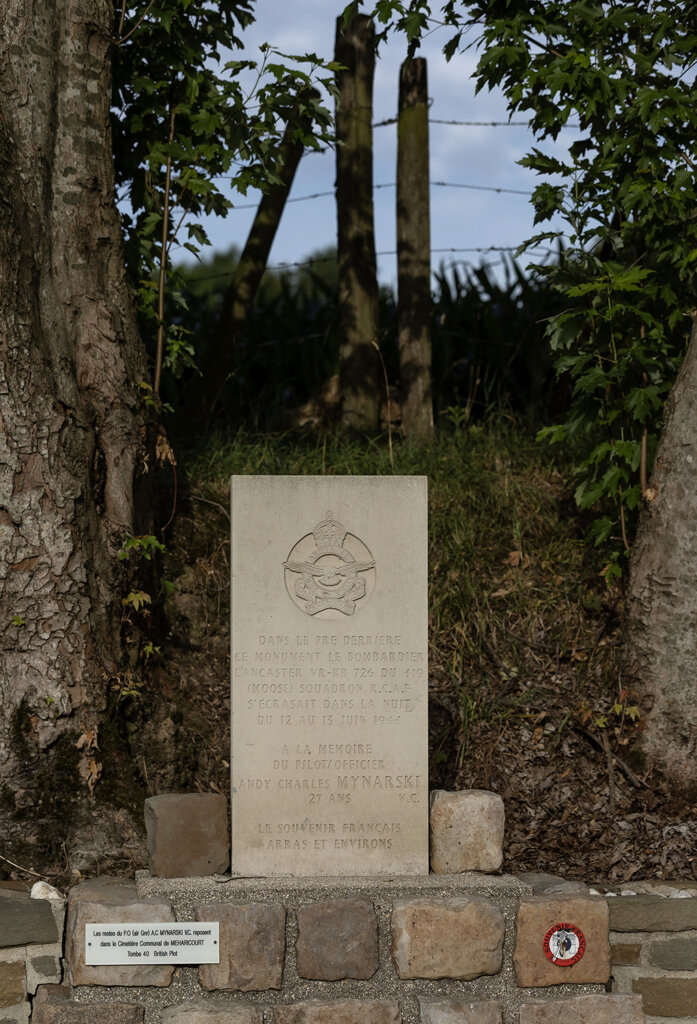
A simple memorial stands at the intersection of two laneways by the cornfield where Andrew Mynarski’s Lancaster crashed the night of June 12-13, 1944. [Stephen J. Thorne/LM]
Advertisement








